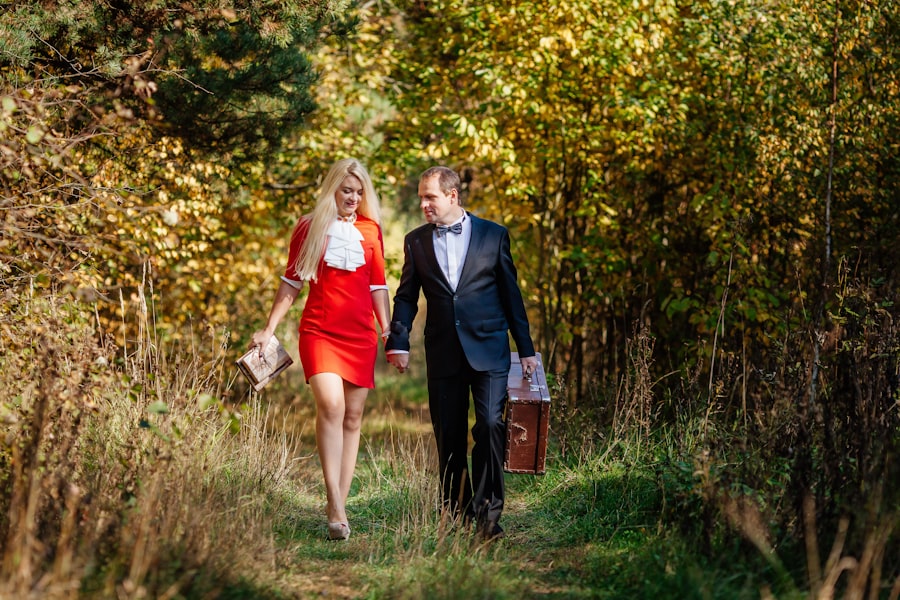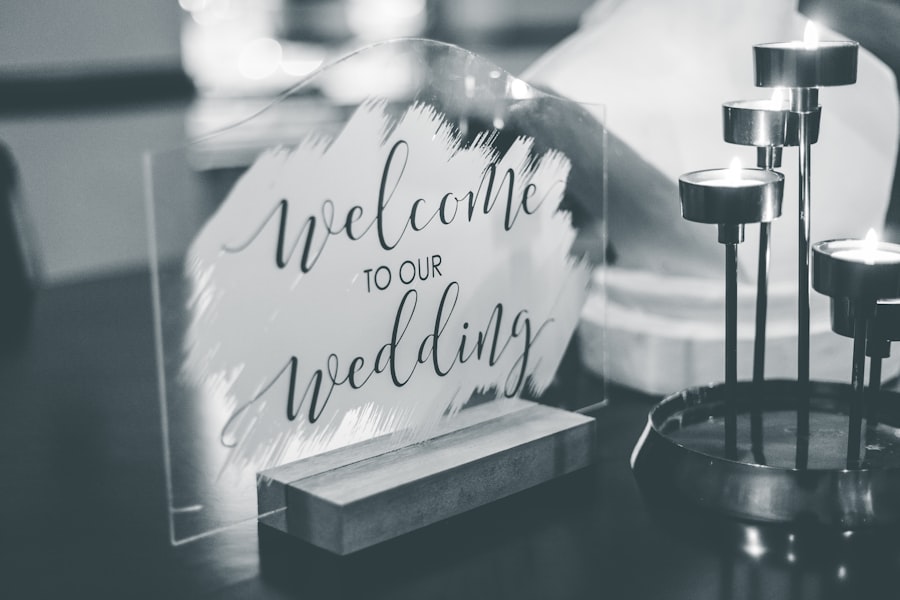The selection of music plays a pivotal role in establishing the atmosphere of any event, particularly weddings. From the moment guests arrive, the auditory backdrop sets the emotional tone for the day. Choosing the right music can evoke feelings of joy, nostalgia, and romance, creating an ambiance that resonates with the couple’s unique love story.
For instance, a couple might opt for classical strings during the ceremony to enhance the solemnity of their vows, transitioning to upbeat jazz or contemporary pop as guests mingle during cocktail hour. This thoughtful curation not only reflects the couple’s personalities but also engages guests on an emotional level, making them feel part of the celebration. Moreover, the music selection should align with the various segments of the event.
For example, during the reception, a mix of genres can cater to diverse tastes, ensuring that all guests find something they enjoy. A well-planned playlist might include classic hits from the ’70s and ’80s, modern chart-toppers, and even some culturally significant tracks that honor the couple’s heritage. By incorporating a variety of musical styles, the couple can create a dynamic atmosphere that encourages guests to dance and celebrate together.
Additionally, working with a skilled DJ or live band can enhance this experience, as they can read the crowd and adjust the music accordingly, ensuring that the energy remains high throughout the evening.
Key Takeaways
- The right music selection sets the tone for the entire event and creates the desired atmosphere.
- A seamless flow of events ensures that the wedding day progresses smoothly and without any hiccups.
- Interactive entertainment engages the crowd and adds a fun and memorable element to the wedding.
- Effective timeline management and coordination with vendors is crucial for a stress-free experience for the couple.
- A memorable first dance can be achieved with thoughtful song selection and some basic dance moves.
Creating a Seamless Flow of Events
A well-orchestrated event is one where each segment flows smoothly into the next, creating a cohesive experience for all attendees. This requires meticulous planning and coordination among various elements, including the ceremony, cocktail hour, dinner service, and dancing. To achieve this seamless flow, couples should develop a detailed timeline that outlines when each part of the event will take place.
For instance, if the ceremony is scheduled for 4 PM, it’s essential to consider how long it will last and when guests will transition to the cocktail hour. This transition period can be enhanced by having a designated area for guests to gather while they await the next phase of the celebration. In addition to timing, communication is key in ensuring that all vendors are on the same page.
The couple should hold meetings with their wedding planner, caterers, and entertainment providers to discuss the timeline and any specific requirements for each segment. For example, if there is a surprise performance planned during dinner, it’s crucial to inform the catering team so they can time food service accordingly. By fostering open lines of communication and establishing clear expectations, couples can minimize potential disruptions and create an event that feels fluid and well-coordinated.
Engaging the Crowd with Interactive Entertainment

Interactive entertainment can significantly enhance guest engagement at weddings, transforming passive observers into active participants in the celebration. Options for interactive entertainment are vast and can be tailored to fit the couple’s style and preferences. For instance, photo booths equipped with props and backdrops allow guests to capture fun memories while mingling.
These booths can be customized to reflect the couple’s theme or interests, providing a personal touch that resonates with attendees. Another engaging option is live entertainment that invites audience participation. This could include a dance-off led by a professional dancer or even karaoke sessions where guests can showcase their vocal talents.
Such activities not only break the ice among guests who may not know each other but also create memorable moments that everyone will cherish long after the event concludes. Additionally, incorporating games or trivia related to the couple’s relationship can spark conversations and laughter, further enhancing the overall atmosphere of joy and celebration.
Managing the Timeline and Coordination with Vendors
| Timeline Management | Vendor Coordination |
|---|---|
| Setting clear project milestones | Communicating expectations to vendors |
| Tracking progress and deadlines | Coordinating delivery schedules |
| Identifying potential delays | Resolving conflicts between vendors |
| Adjusting timelines as needed | Ensuring vendor compliance with agreements |
Effective management of the event timeline is crucial for ensuring that everything runs smoothly on the big day. Couples should work closely with their wedding planner to create a comprehensive schedule that outlines every detail from vendor arrival times to specific moments like speeches and cake cutting. This schedule should be shared with all vendors involved in the event—caterers, photographers, florists, and entertainers—to ensure everyone is aligned on expectations and timing.
Coordination with vendors goes beyond just sharing a timeline; it involves regular check-ins leading up to the wedding day. For example, confirming details such as menu selections with caterers or finalizing song choices with DJs can prevent last-minute surprises. On the day of the wedding, having a designated point person—often a wedding planner—can streamline communication among vendors and help address any unforeseen issues that may arise.
This proactive approach allows couples to focus on enjoying their day rather than worrying about logistics.
Tips for a Memorable First Dance
The first dance is often one of the most anticipated moments of a wedding reception, symbolizing the couple’s love and commitment to one another. To make this moment truly memorable, couples should choose a song that holds special significance for them—perhaps it’s a tune that played during their first date or one that encapsulates their relationship journey. The emotional connection to the song will resonate not only with them but also with their guests.
In addition to song selection, couples may consider taking dance lessons prior to their wedding day. A choreographed routine can add an element of surprise and delight for guests while showcasing the couple’s personalities. Even if they opt for a more spontaneous approach, practicing together can help ease nerves and ensure they feel comfortable on the dance floor.
Lighting also plays a crucial role in enhancing this moment; soft spotlights or twinkling fairy lights can create an intimate atmosphere that draws everyone’s attention to the couple as they share this special dance.
Keeping the Energy High with Dance Floor Hits

Once dinner is over and it’s time to hit the dance floor, maintaining high energy is essential for keeping guests engaged and excited throughout the night. A well-curated playlist filled with dance floor hits from various eras can cater to different age groups and musical tastes. Classic party anthems like “September” by Earth, Wind & Fire or “Uptown Funk” by Mark Ronson featuring Bruno Mars are sure to get people moving and grooving.
Moreover, it’s important for DJs or bands to read the crowd’s energy and adjust their setlist accordingly. If they notice that certain songs are getting people on their feet while others are met with indifference, they should be prepared to pivot quickly. Incorporating popular current hits alongside nostalgic favorites ensures that everyone feels included in the celebration.
Additionally, themed dance sets—such as ’80s night or disco fever—can add an element of fun and encourage guests to let loose on the dance floor.
Customizing the Experience with Personal Touches
Personalization is key in making a wedding feel unique and reflective of the couple’s journey together. Couples can incorporate personal touches in various aspects of their wedding—from decor elements that tell their story to favors that resonate with their interests. For instance, if they share a love for travel, table centerpieces could feature maps or souvenirs from places they’ve visited together.
Another way to customize the experience is through storytelling during speeches or video presentations. Couples might choose to share anecdotes about how they met or highlight significant milestones in their relationship through a slideshow set to meaningful music. These personal narratives not only engage guests but also create an emotional connection that enhances their overall experience at the wedding.
Ensuring a Smooth and Stress-Free Experience for the Couple
Ultimately, ensuring a smooth and stress-free experience for the couple is paramount on their wedding day. This begins long before the event itself; thorough planning and organization are essential in alleviating potential stressors. Couples should consider hiring a professional wedding planner who can manage logistics and coordinate with vendors on their behalf.
This allows them to focus on enjoying their day rather than getting bogged down by details. On the day of the wedding, having a clear point of contact for all vendors can significantly reduce stress levels for couples. This person can handle any last-minute issues that arise—be it a delay in vendor arrival or unexpected weather changes—allowing couples to remain present in each moment without distraction.
Additionally, encouraging open communication among family members and friends can foster a supportive environment where everyone works together to ensure that the couple feels loved and celebrated throughout their special day.